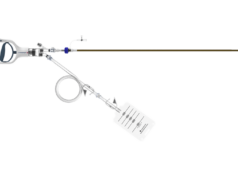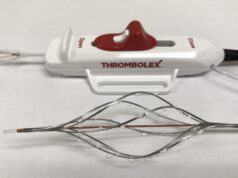Results of the landmark CATCH (Comparison of Acute Treatments in Cancer Haemostasis) study were published in The Journal of American Medical Association (JAMA), comparing innohep (tinzaparin), a low-molecular weight heparin (LMWH), with warfarin in patients with cancer-associated thrombosis.
In the study, sponsored by LEO Pharma, the six-month incidence of recurrent venous thromboembolism was 7.2% in the innohep arm versus 10.5% in the warfarin arm. This means that patients in the innohep arm are 35% less likely to experience a venous thromboembolism during the first six months of treatment compared to patients in the warfarin arm. Even though this primary endpoint was not met at the 5% level (p=0.07) this difference may be clinically relevant in the management of patients with cancer-associated thrombosis.
As a secondary outcome measure innohep reduced symptomatic deep vein thrombosis by 52% (p=0.04). This significant reduction in symptomatic deep vein thrombosis should be considered hypothesis-generating and exploratory as the secondary analyses were not adjusted for multiple comparisons. With innohep once daily at a full therapeutic dose of 175IU/kg there was no increase in major bleeding or mortality, but it was associated with a lower rate of clinically relevant non-major bleeding (p=0.004).
Thromboembolism or blood clots are one of the leading causes of death in patients with cancer. Approximately 1 in 10 patients with cancer dies from a blood clot related event rather than the cancer itself, yet the risk of cancer-associated thrombosis is not commonly discussed with patients.
Mike Laffan, professor of haemostasis and thrombosis, honorary consultant in haematology, Faculty of Medicine Imperial College, London said, “CATCH is the largest randomised, controlled trial on the treatment of thrombosis in cancer patients and the results support current clinical guidelines recommending the use of LMWH rather than warfarin to prevent recurrent blood clots in these patients. It provides us with further data for evidence-based therapeutic choices and better understanding of the natural history of patients with cancer and thrombosis.”
Eve Knight, chief executive and co-founder of Anticoagulation Europe (UK), a charity whose aim is the prevention of thrombosis and the provision of information, education and support said, “Although it is not widely known, cancer patients are at an increased risk of blood clots and getting the right treatment to avoid recurrence is vital. The CATCH study is the largest of its kind and gives us important answers which could benefit the 50,000 cancer patients living with cancer associated thrombosis in the UK.”
Geraldine Murphy, managing director of LEO Pharma UK & Ireland said, “LEO Pharma is very pleased that its commitment to the CATCH study has yielded important answers which will ultimately benefit patients living with cancer-associated thrombosis. CATCH is a landmark study—the world’s largest randomised controlled study in treatment of cancer-associated thrombosis and will add significantly to the understanding of this area.”
Despite clinical practice guidelines recommending the use of LMWH, including innohep, warfarin remains a frequently used anticoagulant treatment worldwide for cancer patients with recurrent venous thromboembolism. The CATCH study results are a significant addition to the existing evidence base and Clinical Practice Guidelines, particularly as the trial was conducted in the modern era of rapidly evolving cancer treatment.









